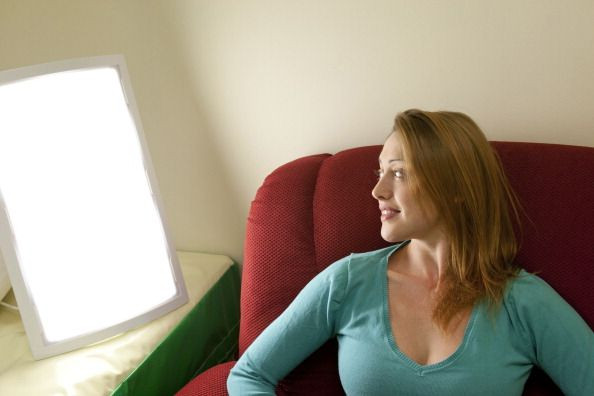Light Therapy Gives Relief To Cancer Survivors Battling Depression

Cancer changes people. The diagnosis in and of itself inspires unexpected feelings, while treatment is a life-or-death ordeal. Naturally, many survivors experience lingering symptoms of anxiety and depression lasting in some cases for years after they complete treatment. Light therapy, a new study finds, decreased depressive symptoms while normalizing the circadian rhythms of cancer survivors.
The researchers led by Dr. Heiddis Valdimarsdottir, associate professor of oncological sciences at Mount Sinai, say a simple month-long treatment using Litebook for 30 minutes each morning may lift a survivor’s spirits and dramatically improve overall quality of life.
“Cancer can be very distressing and being diagnosed with cancer can be a major stressor,” said Valdimarsdottir in a 2012 lecture recorded on YouTube. She has been studying the psychological, behavioral, and biological consequences of cancer risk and has focused some recent research on interventions for reducing distress among cancer patients.
Cancer and Depression
One in four people with cancer have clinical depression, according to the American Cancer Society, while most patients face some degree of depression, anxiety, or fear.
“Stressful life events can cause emotional distress by challenging our meaning and order in the world,” Valdimarsdottir explains. “We walk around with kind of an idea of what the world is like and suddenly something happens and our world is turned upside down.”
There’s good reason to process an experience as traumatic as cancer. Distress not only affects a patient’s quality of life, she explains, “it can also affect how they cognitively process information.” In previous studies, she and her colleagues observed those patients who were distressed prior to a meeting with their doctor retained much less information than patients who felt less anxiety. An anxious or depressed psychological state has serious consequences, and can even lead patients to make less-informed decisions about their cancer care, she says.
Patients who do not express their emotions, Valdimarsdottir explains, find it difficult to shift their dark moods. One 2001 study indicated breast cancer survivors who feel constrained in expressing their emotions had higher levels of depression. Talking allows us to process what has happened and this ultimately reduces intrusive and depressing thoughts or weakens their hold on us, she says.
Talking, though, does not help all survivors. Is there another way to move through negativity and process a past experience?
Let There Be Light
Light therapy, a simple treatment where a patient sits near a bright box, is thought to alter brain chemicals linked to mood. With colleagues at Mount Sinai, Northwestern University, University of Iowa, UC San Diego, and Reykjavik University, Valdimarsdottir randomly divided 54 cancer survivors into a bright white light or a dim red light group. After measuring their depressive symptoms and circadian activity rhythms, participants received a lightbox and instructions for its use: 30 minutes every morning for four weeks. After completing the light exposures — as well as during points in between — the researchers measured participants’ rhythms and symptoms again.
What did the team discover? Patients exposed to the bright light experienced improvement in depressive symptoms while those exposed to the dim red light experienced no change in symptoms.
Based on these results, Valdimarsdottir and her colleagues conclude that light therapy “might provide a non-invasive, innovative way to decrease depression among cancer survivors and normalize circadian rhythms, which are vital for health and well-being.” They presented their research Thursday to a meeting of the American Psychosomatic Society.
Source: Valdimarsdottir H, Wu LM, Ludgendorf S, et al. Systematic Light exposure improves depression among cancer survivors. American Psychosomatic Society. 2016.



























